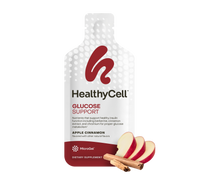Article at a Glance
• Niacin is one of 13 essential vitamins needed in your diet.
• Niacin provides many health benefits including inflammation control, plus heart and cholesterol support.
• Your body can make small amounts of niacin, and it is also available in food sources and nutrition supplements.
• Niacin deficiency is rare in the U.S. as most diets consist of adequate amounts of protein, which contains tryptophan that your body can convert into niacin.
When was the last time you went for a physical? Did your cholesterol results come back within the normal range? If your “bad” cholesterol tested high, it might be helpful to introduce some more niacin into your diet. Read more below to understand the benefits of niacin.
What Is Niacin?
Niacin, also known as vitamin B3, is one of the 13 essential vitamins needed in your diet because your body cannot make enough on its own.
Like all B vitamins, niacin is water-soluble so it dissolves in water. This dissolution allows your body to easily flush out any excess instead of storing it in your liver or fat tissue.[1]
Why You Need Niacin
Niacin is essential for many of your body’s physiological functions, such as hormone production, circulation, and inflammation control. Other benefits include:
• Helps your body convert food (carbohydrates, protein, fat) into energy
• Supports heart health, and helps lower the bad LDL cholesterol, and raise the good HDL cholesterol [2][3]
• Plays a role in cellular health by supporting replication, maintenance, and repair of DNA [1]
Where to Get Niacin
Small amounts of niacin can be made in your body. It is also found in food sources high in protein.[4][5]
Dietary sources rich in niacin include:
• Beef
• Poultry
• Fish
• Peanuts/peanut butter
• Fortified cereals
Not all sources of niacin are absorbed equally. For example, the niacin made in your body, and the type found in grains more difficult to absorb because it is made from an amino acid called tryptophan.[6]
You can also get niacin in nutritional supplements. Supplementing your diet with niacin using MICROGEL™ technology is best for optimal absorption. This delivery system allows you to fully absorb nutrients into your bloodstream and then into your cells, where they work to improve health.
The Forms of Niacin
Most sources of niacin are found in these two forms:
1. Niacin or nicotinic acid — This is the form that lowers the bad LDL cholesterol, but it may also cause the skin to flush when taken in high doses.
2. Nicotinamide or niacinamide — Most niacin is converted into this form for absorption. However, this form does not have the cholesterol benefits and it does not typically cause the skin to flush.[7]
Both forms are easily absorbed and present in dietary sources and nutrition supplements. Niacin is also available in other forms inside nutrition supplements, such as inositol hexanicotinate. This form does not cause the skin to flush, but it has a lower absorption rate.
How Much Niacin Do You Need?
Everyone is different, and certain factors such as your age, sex, or health will affect your unique nutritional needs differently than someone else. To provide a general guide, the Food and Nutrition Board (FNB) establish the Recommended Dietary Allowance (RDA) to meet the needs of most healthy individuals. Note: Niacin and niacin from tryptophan are not equally absorbed, therefore the RDA is expressed as milligrams of niacin equivalents (NE). For every 60 mg of niacin from tryptophan, you will get 1 mg of nicotinamide, or 1 NE. [1] The NE for infants is expressed as “adequate intake” (AI).
Niacin RDA:
• Infants (0 – 12 months): 0.4 – 0.5 mg/day NE AI
• Children (1 – 8 years): 0.9 – 1.2 mg/day NE
• Adolescents (9 – 18 years): 1.8 – 2.4 mg/day NE
• Adults (19+ years): 2.4 mg/day NE
• Pregnant and nursing women: 2.6 – 2.8 mg/day NE6
If you have a preexisting health condition, concern, or take prescription medication, it’s important to talk with your doctor or registered dietitian about your nutrition, especially when choosing which supplements and dosages are optimal for your health.
Toxicity
The more serious toxic side effects are seen when consuming doses as high as 1,000 – 3,000 mg per day. Flushing of the skin may occur at lower doses. A tolerable upper intake level (UL) has been established to prevent the more serious side effects.[6]
Niacin Tolerable Upper Intake Level (UL):
• Infants (0 – 12 months): - mg/day
• Children (1 – 8 years): 10 – 15 mg/day
• Adolescents (9 – 18 years): 20 – 30 mg/day
• Adults (19+ years): 25 mg/day
Niacin toxicity from dietary sources has not been seen. However, adverse side effects can be experienced when taking exceedingly large doses from nutrition supplements.[3][6] Although rare, symptoms of toxicity include:
• Stomach ulcers and other gastrointestinal issues
• Hypotension
• Gout
• Liver damage
• Fatigue
• Vision issues
Niacin Deficiency — What Are the Symptoms?
Niacin deficiency is rare within the United States because the majority of diets consist of adequate amounts of protein, which contains the amino acid tryptophan, which makes niacin. Deficiency is more commonly seen in developing countries or in individuals who are battling cancer. It can also be a result of malnourishment or alcoholism.
A niacin deficiency often results in pellagra, a disease known by the three Ds: dermatitis, dementia, and death (if left untreated).
Other symptoms of niacin deficiency include:
• Vomiting
• Diarrhea
• Neurological issues
Niacin in HealthyCell Products
Bioactive Multi — Best for absorption!
The form of niacin contained in Bioactive Multi is nicotinic acid. The dosage of niacin is 16 mg, which satisfies 100 percent of the Daily Value (%DV).
HealthyCell Pro
The form of niacin contained in HealthyCell Pro is niacin. The dosage of niacin is 23 mg in the morning formula and 23 mg in the evening formula, for a daily dosage of 46 mg, satisfying 230 percent of the Daily Value (%DV).
HealthyCell
The form of niacin contained in HealthyCell AM/PM Nutrition is niacinamide. The dosage of niacin is 23 mg in the morning formula and 23 mg in the evening formula, for a daily dosage of 46 mg, satisfying 230 percent of the Daily Value (%DV).
Conclusions and Recommendations
• Niacin in the form of niacin or nicotinic acid is the best form to use for cholesterol benefits.
• Too much niacin can result in harmless flushing of the skin, and excessively high doses of 1,000 – 3,000 mg/day can result in serious health consequences.
• Deficiency is rare in the U.S. but will result in pellagra if untreated.
References
1. McGuire, Michelle, PhD, and Kathy Beerman A., PhD. “Chapter 10 Water-Soluble
Vitamins.” Nutritional Sciences: From Fundamentals to Food. 2nd ed. Australia:
Thomson/Wadsworth, 2007. 452-454. Print.
2. Ehrlich, Steven, NMD. “Vitamin B3 (Niacin).” University of Maryland Medical Center.
University of Maryland, n.d. Web. 01 Dec. 2016.
3. Higdon, Jane, PhD, Victoria Drake, PhD, and Barbara Delage, PhD. “Niacin.”
Linus Pauling Institute Micronutrient Information Center. Oregon State University,
22 Aug. 2016. Web. 30 Nov. 2016.
4. Marcason, Wendy, RDN. “What Are B-Vitamins and Folate?” Ear Right. Academy of
Nutrition and Dietetics, 14 Dec. 2015. Web. 14 Oct. 2016.
5. “Office of Dietary Supplements - Niacin.” NIH Office of Dietary Supplements, U.S. Department of Health and Human Services, ods.od.nih.gov/factsheets/Niacin-HealthProfessional/.
6. Brasaemle, Dawn, PhD. “Thiamin Niacin Riboflavin Lecture.” Rutgers University – Niacin. New Brunswick. 2015. Lecture.
7. Institute of Medicine (US) Standing Committee on the Scientific Evaluation of Dietary Reference Intakes and its Panel on Folate, Other B Vitamins, and Choline. Dietary Reference Intakes for Thiamin, Riboflavin, Niacin, Vitamin B6, Folate, Vitamin B12, Pantothenic Acid, Biotin, and Choline. Washington (DC): National Academies Press (US); 1998. 6, Niacin. Available from: https://www.ncbi.nlm.nih.gov/books/NBK114304/




